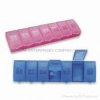ljtechservices
Member
- Reaction score
- 1
- Location
- Normal, IL
with whatever i disassemble, car parts, printers, computers, etc... I've just used the same method my dad taught me.
assembly is usually the reverse of disassembly (thanks Haynes Manuals)
1st screws I remove get placed furthest away
then as each assembly is taken out the screws go near it. till I have the last thing or screw removed closest to me.
i use a rag or static mat to keep the screws on so they don't move around. but sometimes there's an "incident" and i'm using a magnet to find them on the floor.
assembly is usually the reverse of disassembly (thanks Haynes Manuals)
1st screws I remove get placed furthest away
then as each assembly is taken out the screws go near it. till I have the last thing or screw removed closest to me.
i use a rag or static mat to keep the screws on so they don't move around. but sometimes there's an "incident" and i'm using a magnet to find them on the floor.


